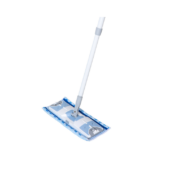As your business procedures grow and get more sophisticated, you must distinguish between two types of procurement: direct procurement and indirect procurement. These two procurement methods affect corporate operations differently. They require a different attitude and, often, different methods.
This guide defines direct procurement, distinguishes it from indirect procurement, and discusses vendor management approach in direct procurement.
Direct procurement
Direct procurement involves buying items and services directly related to your business’s production.
Some direct procurement examples:
- Raw materials (boat-building fibreglass)
- CPU chips for computer manufacture)
- Some professional services, like architectural design for a property development firm, go directly into production.
- Some software purchases (graphic design firm software)
Analysing whether a purchase is necessary to provide a good or service defines direct procurement.
Computer manufacturers need CPUs to construct computers, while graphic design agencies need design tools to create visuals.
Comparing direct and indirect procurement helps explain its complexities.
How does direct vs. indirect procurement differ?
Indirect procurement involves buying essential commodities and services that don’t go directly into production.
Say your clothing store makes its own clothes. Direct purchasing includes clothing supplies like fabric.
Indirect procurement examples:
- Administration office supplies
- Your physical storefronts rent
- Ecommerce platform subscription
All of these costs are necessary but unrelated to garment production.
Directly vs. indirectly Procurement
Direct or indirect procurement is clear for some transactions.
In organisations that sell services rather than products, software purchases are harder to categorise.
Think digital marketing agency. A marketing agency doesn’t make goods. No parts or raw materials needed.
Some software purchases are essential to their services, such as:
- Digital ads platforms
- Marketing automation software
- Tools for email marketing
The marketing agency needs software to sell digital advertising as a service, hence this acquisition is direct procurement.
However, they may employ project management or internal communications software. These are indirect purchases.
Ask, “Does this product go directly into the production of our good or service?” to determine direct or indirect procurement.
Vendor management matters in direct procurement
Direct purchase requires supplier relationship management. The products these vendors offer are vital to your organisation. Their absence prevents you from making your product.
Vendor risk management matters. Supply chain interruptions can disrupt production procedures and lower profits.
Your marketing agency’s ability to meet customer contracts is affected by considerable marketing automation platform outages.
Raw materials can affect the durability of your apparel, which can set you apart as a maker. When a strategic supplier goes out of business, you must find a new vendor, which changes your product’s physical composition.
Your competitive advantage may also come from direct vendor relationships. Without direct production input, your product or service may change.
Procurement teams should manage strategic supplier relationships by:
- Real-time performance visibility and vendor expenditure and cost-saving insights from supplier relationship management software
- Setting vendor KPIs and expectations and holding performance review meetings
- Regularly assessing operational, financial, and market risk
Indirect procurement vendor management importance
Indirect suppliers need vendor relationship management much like direct procurement.
Avoid excluding indirect suppliers from your vendor management approach. If this vendor disappeared today, would operations be significantly affected?
If so, prioritise supplier relationship protection.
What are direct procurement challenges?
Managing direct procurement presents three problems for strategic sourcing and procurement teams:
1. Tricky procedures
RFX, IT compliance, and purchase approval routines are required. Unfortunately, it is typically slowed. Automating approval processes is possible with procurement software.
2. Manage risk
A supplier connection always contains risk (security risk is always inherent in SaaS purchase), but picking direct vendors increases this risk.
If a cyberattack on your supplier’s servers causes severe disruption on your digital advertising platform, your marketing agency’s capacity to serve clients may be halted.
If your fabric supplier runs out, you may have to cut output as a clothes manufacturer.
3. Cost-value balance
Hiring new suppliers is generally about saving money, so you want a software solution that maximises your budget.
The cheapest vendor isn’t necessarily the greatest option. Low prices might lead to quality assurance and risk management concessions, which can hurt your organisation.
Use three methods to balance cost and value:
- Determine early in the procurement process whether cost or value is most important. For instance, you may choose the cheapest office equipment seller regardless of quality. If their feature set is better, you may be willing to pay extra for an email marketing platform.
- Improve contract negotiations and receive the best price with price benchmarking data.
- Avoid overage fees by monitoring software usage.

















